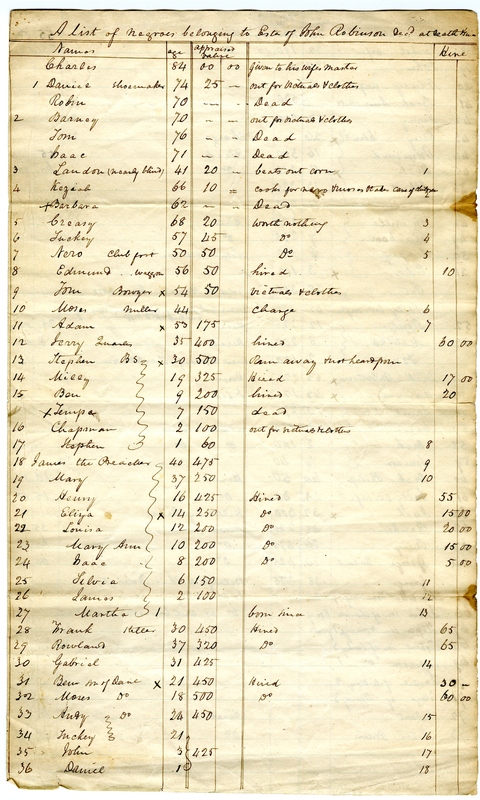After surveying material held by Leyburn Library's Special Collections and Archives, we determined that items related to "Jockey" John Robinson's bequest to Washington College would be a manageable body of documents to begin the project. At the time of his death in 1826, Robinson enslaved 73 people at his plantation, Hart’s Bottom, in southeastern Rockbridge County, Virginia. Robinson’s will stated that the individuals bequeathed to Washington College were to remain enslaved by the school for 50 years after his death in order to benefit the college.
Relevant documents came from the following collections:
- Reid Family Papers (WLU Coll. 0027) - Samuel McDowell Reid was a college trustee from 1819-1869, secretary of the board from 1844-1853, and at one time, clerk of the Rockbridge County Court.
- Trustees' Papers (WLU RG 0002) - Items from the Trustees’ Papers include copies of John Robinson’s will, receipts, promissory notes, invoices, and correspondence.
- Rockbridge County court documents - Items on microfilm from the Rockbridge County Courthouse include the Will Books, detailing all financial transactions, by year, related to the Robinson Estate from 1828-1858, including the hiring out of enslaved persons.
In order to establish a comprehensive list of persons involved, three primary documents were used. From our own collections, we selected an 1826 list of persons enslaved by Robinson at the time of his death, an 1834 inventory of persons still enslaved by Washington College, and from a Rockbridge County Court House Will Book, an 1826 appraisement of persons enslaved by Robinson at the time of his death.
The 1826 list of persons enslaved by Robinson at the time of his death presents several challenges to the researcher. Created sometime after Robinson’s death, the list includes information that wouldn’t be known until well after 1826, like births, deaths, and hiring information that does not correlate with other 1826 hiring records. Instead of being a snapshot in time, as the title would suggest, it seems that Samuel McDowell Reid likely used the document as a running list, editing as needed, over the years.
